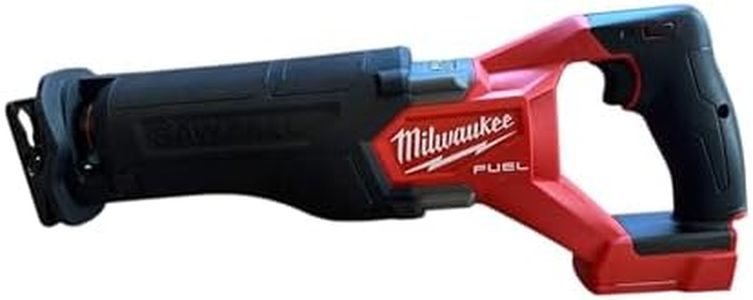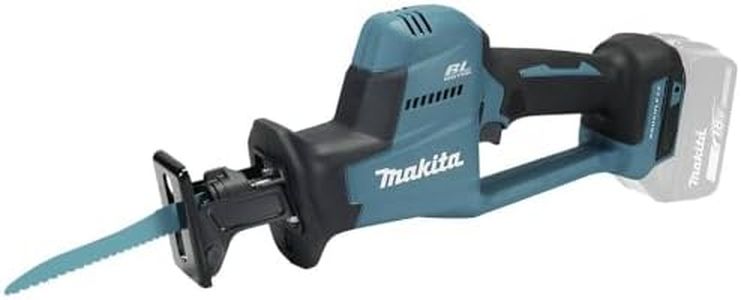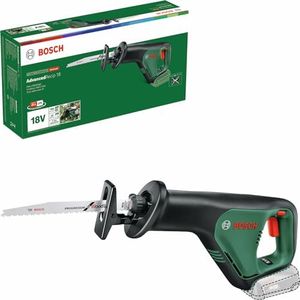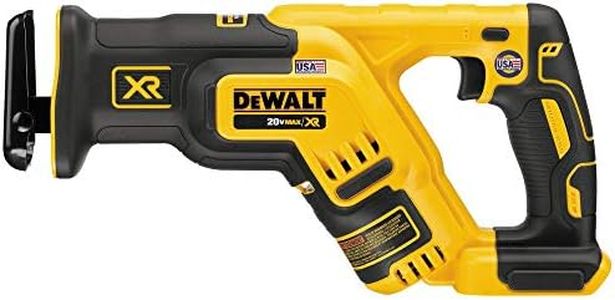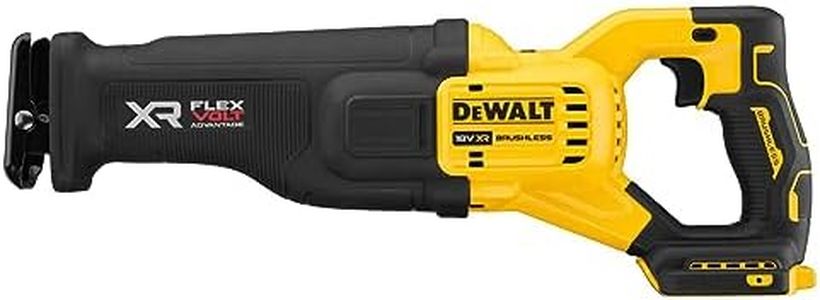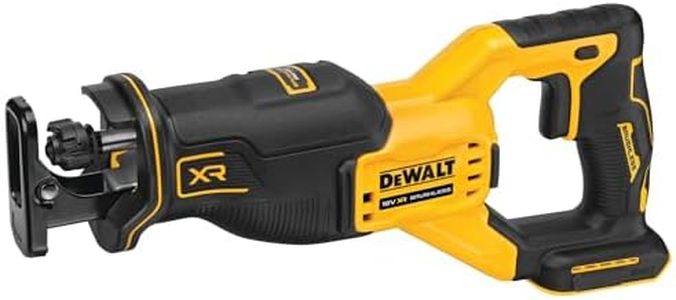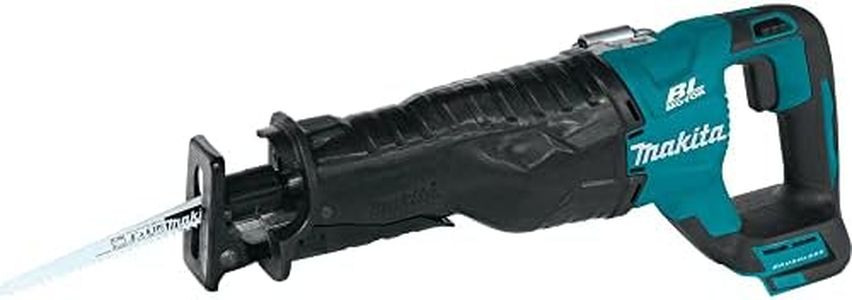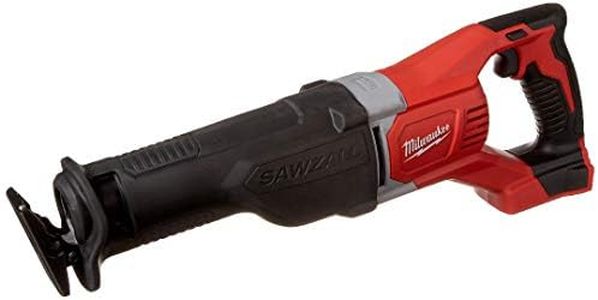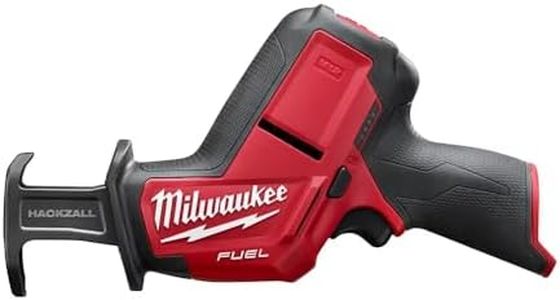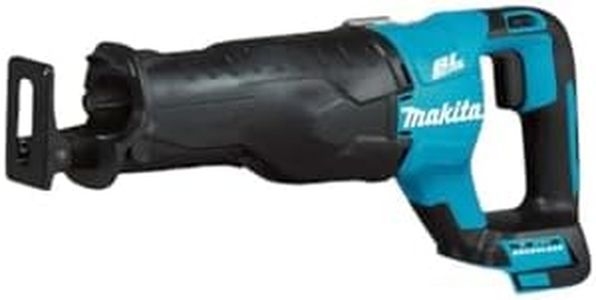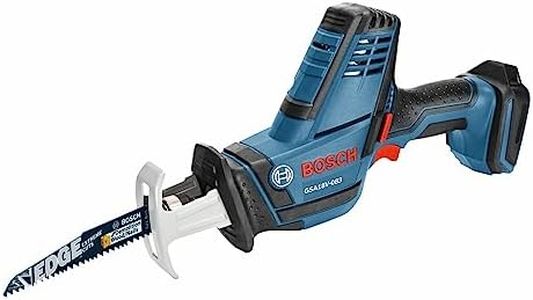We Use CookiesWe use cookies to enhance the security, performance,
functionality and for analytical and promotional activities. By continuing to browse this site you
are agreeing to our privacy policy
10 Best Reciprocating Saws
From leading brands and best sellers available on the web.By clicking on a link to a third party's website, log data is shared with that third party.
Buying Guide for the Best Reciprocating Saws
Choosing a reciprocating saw can feel overwhelming with so many models and options available, but the key is to match the tool’s capabilities to the kinds of jobs you plan to tackle. Think about what materials you’ll be cutting most often, how frequently you’ll use the saw, and how comfortable you are handling power tools. Understanding the main features will help you narrow down your choices and find the saw that fits you best.Power SourceThe power source of a reciprocating saw refers to whether it runs on corded electricity or a battery. Corded saws must be plugged in, offering continuous power and often more cutting strength, making them good for heavy-duty or extended tasks. Cordless saws use rechargeable batteries, granting you more mobility and convenience for quick or remote jobs, but may not run as long or be as powerful. If you’ll usually have access to an outlet and need to cut thick or tough materials, corded is preferred. If you value portability and will do lighter tasks, cordless might be better.
Stroke LengthStroke length means how far the blade moves back and forth with each cycle. Longer stroke lengths (usually over 1 inch) remove more material with each movement, leading to faster cuts but sometimes less precision. Shorter lengths allow for more control and smoother operation on delicate work. For demolition or big jobs, longer stroke lengths are great, while precision work benefits from shorter strokes.
Stroke Speed (SPM)Stroke speed, usually measured in strokes per minute (SPM), tells you how quickly the blade moves. Higher speeds translate to faster cutting but may be harder to control in thick or hard materials. Lower speeds provide more control and are better for detailed or tricky jobs. Some saws offer variable speed control, letting you adjust to your comfort and project. Choose higher SPM for quick, rough cuts, and lower for careful, precise work.
Weight and ErgonomicsWeight and ergonomics affect how easy the saw is to handle, especially over long periods. Lighter saws are less tiring to use for overhead or awkward angles, but heavier saws may feel more stable for big jobs. Good grip design, comfortable handles, and balanced weight distribution make a saw easier and safer to control. Think about the types of cuts you do most often, and whether you’ll be holding the tool for long stretches, to find the right balance between comfort and sturdiness.
Blade Change MechanismThe blade change mechanism describes how you swap out blades. Some saws require tools (like a hex key) to change blades, while others have tool-free systems. Tool-free mechanisms save time and hassle, especially if you switch blade types frequently for different materials. If you expect to do a lot of varied cutting, a tool-free system is more convenient. Otherwise, a tool-based system works fine for less frequent changes.
Orbital ActionOrbital action refers to an additional elliptical motion added to the regular back-and-forth movement of the blade. This feature makes the saw cut faster through wood and soft materials but can be too aggressive for metal or finer work. If you plan to cut mostly wood or do demolition, orbital action can be very useful; if you need more precision or cut hard materials, you may want a standard movement.
Vibration ControlVibration from using a reciprocating saw can cause fatigue and discomfort, particularly during long sessions. Some saws include special designs or materials to reduce vibration and make handling more comfortable. If you foresee extended use or are sensitive to tool vibration, look for saws with advertised anti-vibration features.
